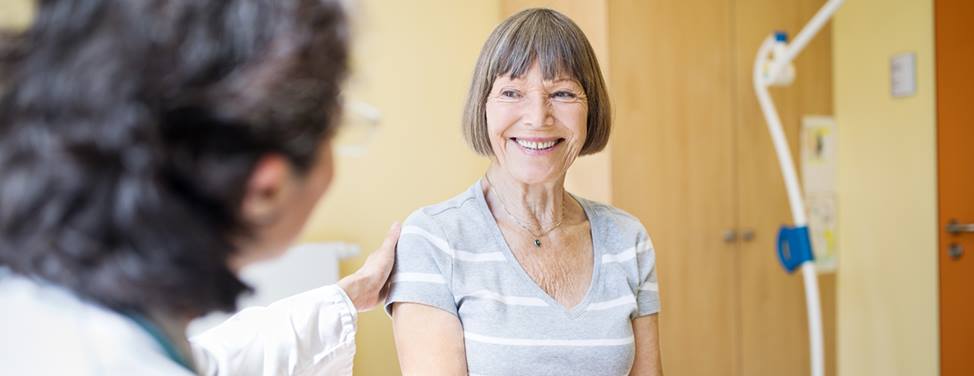
FAQ: Electrophysiology Study and Catheter Ablation
- What is an electrophysiology study and catheter ablation?
- Is the electrophysiology study and catheter ablation procedure safe?
- How long is the procedure?
- Will the procedure hurt?
- Why is a catheter inserted into a blood vessel in my neck?
- Will the electrophysiology study and catheter ablation be performed at the same time?
- Who will perform the procedure?
- How many electrophysiology studies and catheter ablation procedures has UCSF Medical Center performed?
- How long will I stay in the hospital?
- When can I resume my normal activities?
- When should I return to work?
- Will I return to UCSF Medical Center for follow-up care?
What is an electrophysiology study and catheter ablation?
An electrophysiology study is a test to measure the electrical activity of the heart and to diagnose arrhythmia or abnormal heart rhythms.
Catheter ablation is a procedure performed to treat some types of arrhythmia.
Is the electrophysiology study and catheter ablation procedure safe?
Yes, the electrophysiology (EP) study and catheter ablation procedure are considered safe. As with any procedure, there are potential risks. The risks will be explained by your doctor before the procedure is performed. The EP study and catheter ablation are performed safely on children and adults, with the youngest patients at 3 months old and the oldest at 97 years old.
How long will the procedure take?
An EP study and catheter ablation may take three to six hours, depending on your condition. Please let your family and friends know the estimated procedure time so they won't worry.
You may feel minor discomfort during the EP and catheter ablation procedures from lying on our X-ray table, from the injection of the local anesthetic or numbing medicine where catheters are placed, or intermittently when doctors induce an abnormal heart rhythm. To minimize discomfort, you may be given short-acting sedatives, depending on the type of procedure you receive and the type of arrhythmia you have. Ask your doctor about the medications you'll receive.
Why is a catheter inserted into a blood vessel in my neck?
The catheters are placed into two large blood vessels – one in the neck and the other in the groin – that enter the right side of the heart. The catheter placed in the blood vessel in the neck enters through the top of the heart. The catheter placed in the blood vessel in the groin enters through the bottom of the heart. By inserting the catheters from two directions, your doctor can better maneuver them to locate the source of your abnormal rhythm and destroy it.
When the catheters are removed from the neck and groin areas, a tiny hole that looks like a bug bite will remain. There's no need for stitches and there should be no scar.
Will the electrophysiology study and catheter ablation be performed at the same time?
Yes. Once we identify where your abnormal rhythm is located during the electrophysiology study, we apply radiofrequency energy to the area during the radiofrequency catheter ablation. We wouldn't want to put you through two different procedures when it can all be done at one time.
Who will perform the procedure?
During the EP study and procedure, electrophysiology fellows, who are cardiologists specializing in electrophysiology, will insert the catheters. (Electrophysiology is the electrical system of the heart.) The electrophysiologist or "attending physician" will be at the control station during the procedure .
From the control station, the electrophysiologist will direct the placing of catheters on an X-ray screen, stimulate an abnormal heart rhythm, diagnose and locate the area of the heart causing the condition, and direct radiofrequency energy to the heart tissue to treat it. Electrophysiology lab nurses and technicians provide care and comfort during the procedure.
How many electrophysiology studies and catheter ablation procedures has UCSF Medical Center performed?
Our electrophysiologists perform more than 400 catheter ablation procedures and 900 total procedures annually. This high volume ensures our team's efficiency and expertise. Because of our expertise and state-of-the-art technology, we receive referrals from throughout the world.
How long will I be in the hospital?
You may return home the same day after the procedure or spend one night in the hospital and return home the next morning.
When can I resume my normal activities?
You can resume your normal daily activities – walking, bathing, showering and so on – as soon as you leave the hospital, unless you are instructed otherwise. Don't strain or lift objects weighing more than 10 pounds for a few days, until the catheter-insertion sites can heal.
Unless your job requires heavy lifting, you can return to work in a day or two.
Will I return to UCSF Medical Center for follow-up care?
Your UCSF doctor will ask you to return at least once after the procedure. There may be more follow-up care, depending on your particular arrhythmia and condition.
If you don't live nearby, your follow-up appointment may be arranged through the doctor who coordinates your care when you return home.
You'll receive follow-up instructions from the electrophysiology team, when you're discharged from the hospital. The UCSF electrophysiologist will write a detailed letter describing your hospital stay and treatment to your primary care doctor or the specialist who referred you to UCSF. Please make an appointment in two to four weeks to see the doctor who is coordinating your care.
UCSF Health medical specialists have reviewed this information. It is for educational purposes only and is not intended to replace the advice of your doctor or other health care provider. We encourage you to discuss any questions or concerns you may have with your provider.









